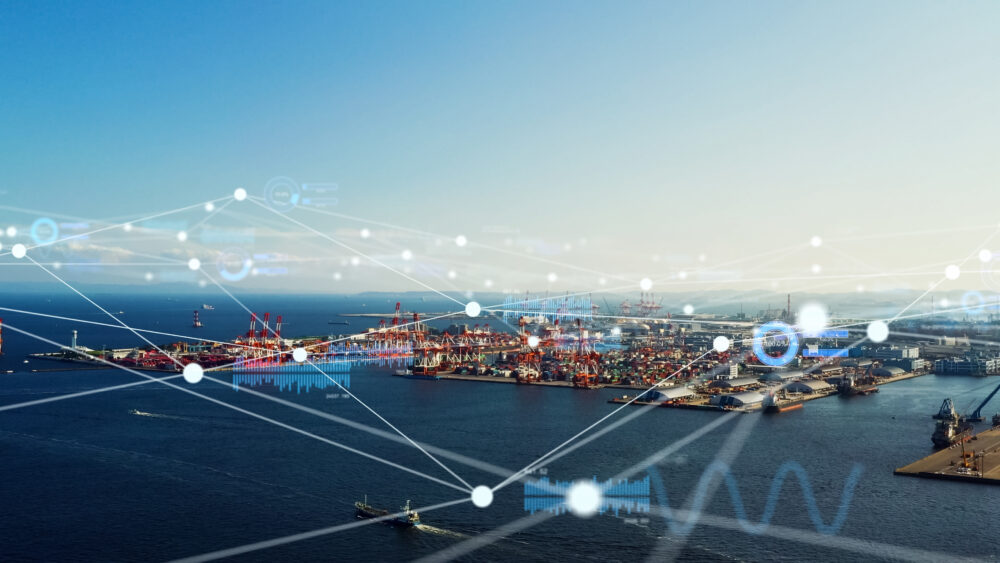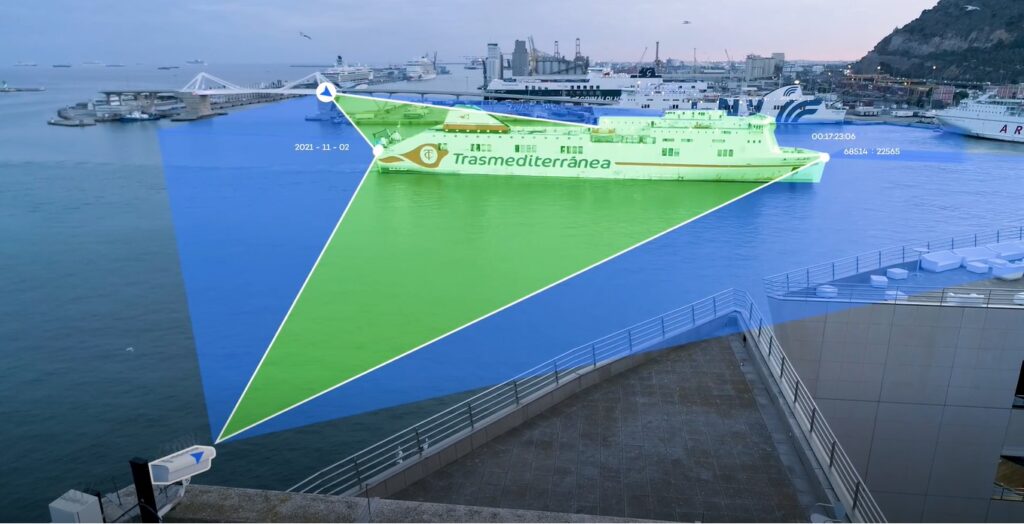 The 5G network enables the deployment of a range of technologies that have the potential to generate a major impact on logistics and transportation. (GettyImages)
The 5G network enables the deployment of a range of technologies that have the potential to generate a major impact on logistics and transportation. (GettyImages)
5G: the G-spot of logistics
5G is the great disruptor in logistics because it is essential to implement various technologies. We review the ports that are already implementing pilots using 5G to achieve more efficient and better connected ports.
 The 5G network enables the deployment of a range of technologies that have the potential to generate a major impact on logistics and transportation. (GettyImages)
The 5G network enables the deployment of a range of technologies that have the potential to generate a major impact on logistics and transportation. (GettyImages)
The volatility surrounding logistics makes technology the essential tool for anticipating and reducing uncertainty. For its deployment, however, a secure and enabling infrastructure such as the 5G network is necessary.
Effects and applications of 5G in logistics
Connectivity, low latency and mass communication position 5G as the enabling medium that allows the deployment of a number of technologies with the potential to generate a major impact on the logistics and transportation sectors.
As far as ports are concerned, the report 5G in the Transportation and Logistics Sector. Impacts and Benefits (in Spanish), by Vodafone Business, highlights the following technologies as the big disruptors:
- High resolution sensors and cameras to identify and manage passengers and goods.
- Artificial Intelligence to identify and interpret images.
- Digital twin for a greater control of the positioning of goods, their content, origin and destination.
- Blockchain for the management of documentation involved in the logistics process and for greater traceability.
- Big Data to collect data in real time and obtain different patterns that help make better operational decisions.
- Internet of Things applied to vehicles to obtain driving, tracking and prediction data to reduce accidents.

5G use cases in ports
Several ports are conducting pilots to implement some of the technologies mentioned thanks to the deployment of the 5G network in their facilities.
Port of Algeciras: a smarter and safer port
The first case of 5G application in the Port of Algeciras seeks to streamline the flow of vehicles to the boarding areas, especially in periods of massive traffic such as those recorded during Operation Crossing the Strait.
Thanks to the license plate recognition system using video cameras connected to the Vodafone/Huawei 5G infrastructure, an automatic vehicle guidance system has been deployed. Including MEC (Multi-access Edge Computing) resources for image processing and querying shipping company databases.
The second use case is an application for the Guardia Civil police that generates, in real time, alerts related to the identification of suspicious persons through the use of facial recognition techniques.
As in the previous case, the solution relies on video processing to obtain information of the passengers' faces that are then compared in the database of individuals in search. The project contemplates the visualization of these alerts on a board installed in the control center and through Augmented and Virtual Reality glasses.
Thanks to 5G technology, port security has achieved greater ubiquity and agility. Augmented Reality allows the representation of asset information on the ground in a geolocalized and real-time manner. This allows an improved response and efficiency in incident resolution, combining local inspection with access to technical data from different systems anywhere and in real time.
Port of Huelva: generating a digital twin
The port of Huelva is developing its digital twin based on a system generated by photogrammetry of the port that creates a Virtual Reality model to obtain an immersive environment that replicates the physical one. In this virtual environment, a series of avatars of the vehicles, containers and trailers that transit through the facilities have been defined, automatically identified by their license plate, and updated in real time.
This pilot is notable for advancing towards intelligent goods management based on high-resolution CCTV camera circuits. This information is verified with the port's records to know what material is being transported and its volumes at all times.
Conversely, the port's systems are enriched with information on the traceability of goods and transport. The next step will be to equip the system with Artificial Intelligence processes that predict the loading and unloading of goods to achieve better operational and capacity performance.
The digital twin enables significant improvements in both safety and operational efficiency within port environments.
APM Terminals: 5G applied to improve safety in industrial and port traffic
APM Terminals and Mobile World Capital Barcelona are working on a pilot project to improve port safety through the use of 5G networks. Connecting cranes, vehicles and people thanks to different advanced communication and location technologies would minimize the potential risk of collisions.
The pilot relies on C-V2X connected car technology and the low latency of 5G communications and Edge Computing to improve port traffic coordination by implementing advanced algorithms to prevent accidents. Through an alarm system, drivers and personnel on foot will be alerted of a potential collision, in addition to sending an instant notification to a control center in the event of an accident.
Trucks, drivers and staff will have a 5G smartphone with a C-V2X application installed. The phone becomes an element of the V2X environment, as well as the tool that enables a connected vehicle fleet. Fixed elements such as streetlights will also be signaled with C-V2X communications, so that they communicate with the rest of the mobile actors in real time.
All the information is sent securely to an application geographically located very close to the place of consumption to offer immediacy in the responses. This application, hosted on the Edge, has the intelligence to coordinate the cooperative driving between the different actors and also offers a dashboard to APM Terminals to visualize the positions of each of the actors participating in the project on a map.
Port of Barcelona: 5G to geolocate ships
In order to optimize berthing operations while emphasizing safety, the Port of Barcelona has conducted a pilot that monitors the entry of ships in real time, regardless of the volume of vessels, the position in which they are located and the weather conditions that may occur.
The space selected for the pilot test was the dock where the ferry terminal is located, where two high-resolution Huawei cameras were placed to record the entry of ships, positioned at opposite points and at a 90-degree angle.
Two Vodafone 5G antennas provide coverage and connectivity to the cameras to send the images in real time for Edge Computing to run a geometric analysis of the images.
To do this, IBM's Artificial Intelligence system based on neural networks, has been trained with 4,402 images of ship bodies, 3,141 images of bows and 3,913 images of sterns, including both day and night so that the system can operate any time of the day.
The processors have been located in the port's Control Tower to turn the tower into an extension of the cloud so images are analyzed faster.
This solution integrates in the same Vessel Traffic Service radar signaling technologies, an Automatic Identification System and, after the aforementioned pilot, 5G and AI.
This will achieve several objectives; to provide predictive information about the floating and fixed elements surrounding the ship to optimize maneuvers, the possibility of remote maneuvering assistance by pilots from the control tower, and a geopositioning that is obtained independently of third party signals. The combination of all these technologies are the prelude to the digital twin and connected ships.
To learn more about 5G applied to logistics and ports
- Smart Ports: Innovative vessel geolocation system using 5G & AI
- Vodafone Business: 5G en el sector Transporte y Logística. Impactos y beneficios
- Industry turns to private 5G to speed digital change







